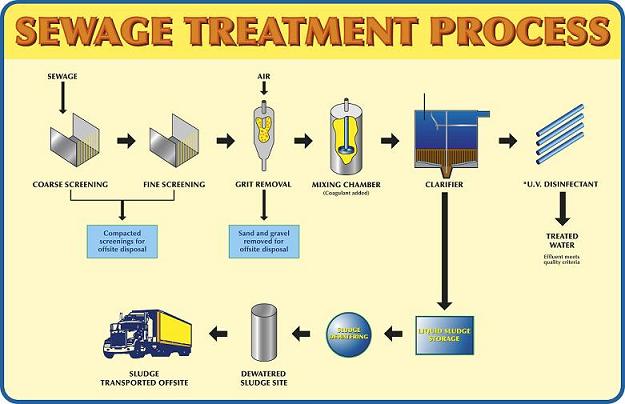What Does Residential Water Treatment System Mean?
Table of ContentsResidential Water Treatment System Fundamentals ExplainedNot known Details About Residential Water Treatment System The Only Guide for Residential Water Treatment SystemThe 6-Minute Rule for Residential Water Treatment System

on the other hand, originates from manufacturing, commercial and business tasks carried as well as has a completely various structure than sewage water. How does it function? The primary step in this water therapy plant is that the wastewater drains to the plant with the assistance of gravity via the primary sewer system.
In this phase, the water moves through the crushed rock chamber to remove any type of grit. The crushed rock is after that disposed of at the dump. The water after that transfers to the bar screens which get rid of large items. These are program displays. Next, the fine screens eliminate smaller things such as undigested foods, or suits, and so on.
This is then removed from the tank as well as disposed of at the dump. Next comes the sedimentation stage, additionally recognized as the key therapy. In this stage, the water streams to the key settling storage tanks, likewise understood as pre-settling containers. These storage tanks have hoppers which are situated in the base of the container where water moves through.
Getting The Residential Water Treatment System To Work
These working out storage tanks enable the sludge to settle as well as then relocates to food digestion storage tanks. In the food digestion storage tanks, the sludge is warmed and blended. Another important point that happens below is the production of biogas, which the wastewater therapy plants can reuse, in the manufacturing of electrical or thermal energy which is another significant benefit to the environment.

The last action in wastewater treatment is assessment. This examination entails examining the contamination level of the water treated and also making certain it follows the greatest standards in order to be launched or reused for domestic or commercial functions. residential water treatment system. Applications: The majority of petroleum refineries or petrochemical along with chemical industries create our website a large quantity of wastewater and also require on-site wastewater therapy plants.
The wastewater right here streams with screens and right into settlement basins that can get debris in big quantities. It functions as a pre-treatment as mentioned above as it occurs before three even more aggressive phases- key, second and also tertiary treatment. Key Treatment Throughout this phase, the wastewater moves into the clarifiers.
Unknown Facts About Residential Water Treatment System
It is the layout of these tanks that result in clearing up, that is, the natural solid matter gathers at the end of the tank while the lighter issue floats to the top becoming much easier for elimination. The organic matter that resolves near the bottom is understood as a main sludge blanket.
Secondary Treatment This treatment phase is composed of cardiovascular aeration. When this air moves with the aerators, the little holes existing, turn them into bubbles and they get blended with the water column.
This RAS returns into the main explanation container and also the microorganisms in it assists in damaging down any kind of raw material in the sewer. When RAS has completely undergone both the main as well as additional explanation basins constantly, i. e a number of times, it is turned right into waste-activated sludge (WAS). The WAS after that does not go back to the key information tank yet rather transfers to the protected storage tanks, additionally referred to as cardiovascular sludge digesters.
The staying sludge steps to the dewatering center that consists of dewatering tanks where the plant uses belt presses to squeeze any type of remaining water out see here now of the sludge. Tertiary Therapy Tertiary therapy follows the process of both main and also additional procedures however likewise furthermore entails mechanical and also photochemical processes.
Everything about Residential Water Treatment System
The objective of this is to remove as much solid physical matters as possible before sending out the effluent for further therapy. Right here chemicals are added to break down any type of strong as well as chemical waste.
There are 2 kinds of resins- one is an anion one while the other is a cation one. These previous resins release hydroxyl ions which are adversely billed while the cation materials launch hydrogen ions that are positively charged. The cation-exchange resins cause conditioning of water, the anion-exchange outcome in the elimination of nitrate from wastewater as well as the combination of both the anion as well as cation exchange gets rid of essentially every ionic contaminant present in the feed water with a process called deionization (residential water treatment system).
Applications: Demineralization leads to the total elimination of minerals from the water and is usually used in get more markets that require water with high degrees of pureness, as an example- make-up or feed water in high-pressure boilers, the food and beverage industry, and also procedure streams used in the manufacturing of electronic devices. They are likewise utilized in sectors for the generation of heavy steam, power and cooling.
Reverse Osmosis (RO) Water Therapy The principle of reverse osmosis (RO) works on the purification approach that results in the removal of a large number of contaminants as well as pollutants from wastewater by using pressure to it when it is on one side of a membrane. Just how does it work? This water therapy plant functions by utilizing a high-pressure pump that raises the stress on the salt side of the RO and requires the water throughout the semipermeable RO membrane layer (which permits some atoms and particles to pass but not others), leaving nearly 95%-99% of liquified salts in the decline stream.